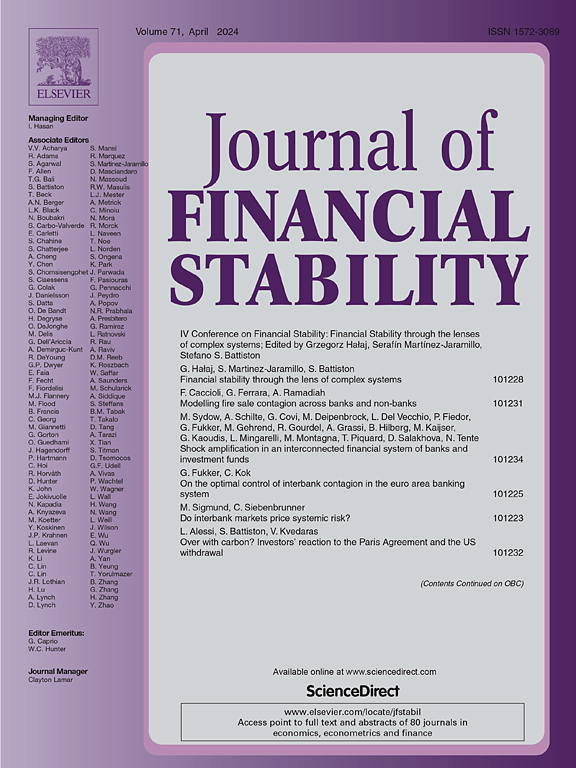Risk shocks, due loans, and policy options: When less is more!
IF 4.2
2区 经济学
Q1 BUSINESS, FINANCE
引用次数: 0
Abstract
We employ a structural model endowed with a banking system in which assets of different qualities, occasionally binding credit restrictions, and regulatory requirements coexist, to analyze the effectiveness of various macroprudential policies that cope with the level of due loans in the economy. We analyze how policy designs influencing impairment recognition by banks affect output and welfare, both in the steady state and across business cycles driven by financial risk. The cost of managing due loans, credit constraints, dividend strategies, and the cure rate, are key components of the driveshaft propelling policies to outcomes. Our findings suggest that “less is more,” i.e. policies emphasizing greater leniency in impairment recognition outperform stricter approaches, when management costs are sufficiently low, especially when combined with high cure rates that enhance the benefits of delaying recognition. However, reducing penalties for banks that violate regulatory requirements proves largely ineffective and exacerbates incentives for non-compliance. The presence of binding credit constraints enhances the effectiveness of lenient impairment policies when management costs are low and diminishes it otherwise.
风险冲击、到期贷款和政策选择:当少即是多!
我们采用了一个结构模型,该模型赋予了一个银行体系,在这个体系中,不同质量的资产、偶尔具有约束力的信贷限制和监管要求并存,以分析应对经济中到期贷款水平的各种宏观审慎政策的有效性。我们分析了影响银行减值确认的政策设计如何在稳定状态和金融风险驱动的商业周期中影响产出和福利。管理到期贷款的成本、信贷约束、股息策略和治愈率是推动政策取得成果的关键因素。我们的研究结果表明,“少即是多”,即在管理成本足够低的情况下,特别是在与高治愈率相结合的情况下,在损伤识别方面强调更宽松的政策优于更严格的方法。然而,减少对违反监管要求的银行的处罚在很大程度上是无效的,并加剧了不遵守规定的动机。当管理成本较低时,具有约束力的信贷约束的存在增强了宽松减值政策的有效性,否则就会削弱管理成本。
本文章由计算机程序翻译,如有差异,请以英文原文为准。
求助全文
约1分钟内获得全文
求助全文
来源期刊

Journal of Financial Stability
Multiple-
CiteScore
7.70
自引率
9.30%
发文量
78
审稿时长
34 days
期刊介绍:
The Journal of Financial Stability provides an international forum for rigorous theoretical and empirical macro and micro economic and financial analysis of the causes, management, resolution and preventions of financial crises, including banking, securities market, payments and currency crises. The primary focus is on applied research that would be useful in affecting public policy with respect to financial stability. Thus, the Journal seeks to promote interaction among researchers, policy-makers and practitioners to identify potential risks to financial stability and develop means for preventing, mitigating or managing these risks both within and across countries.
 求助内容:
求助内容: 应助结果提醒方式:
应助结果提醒方式:


